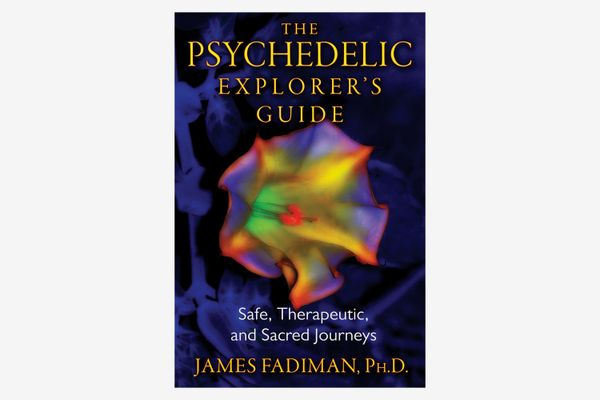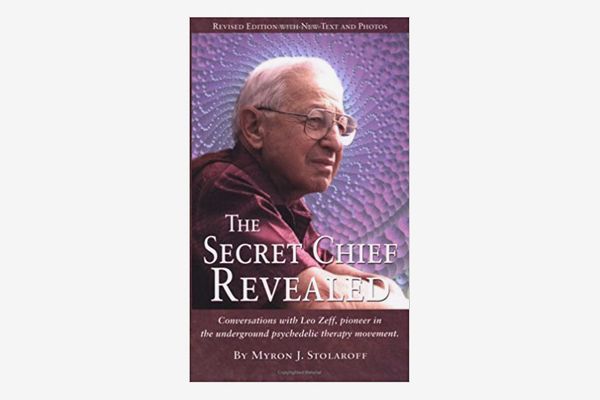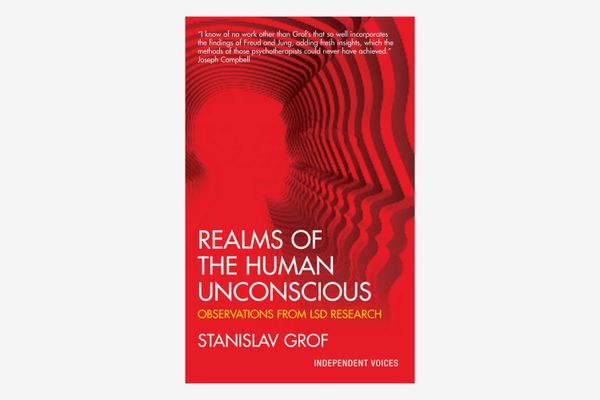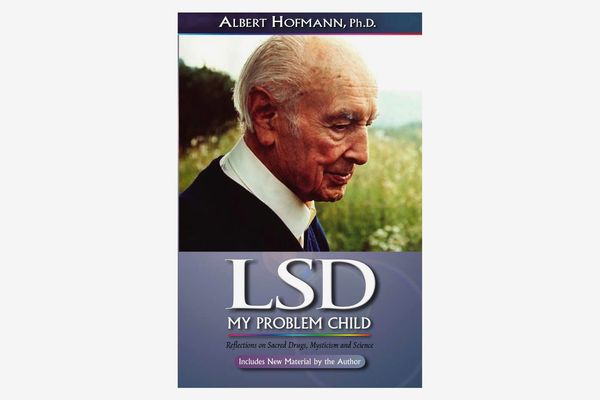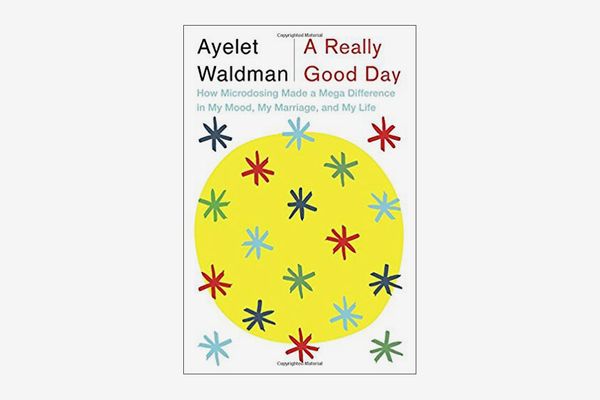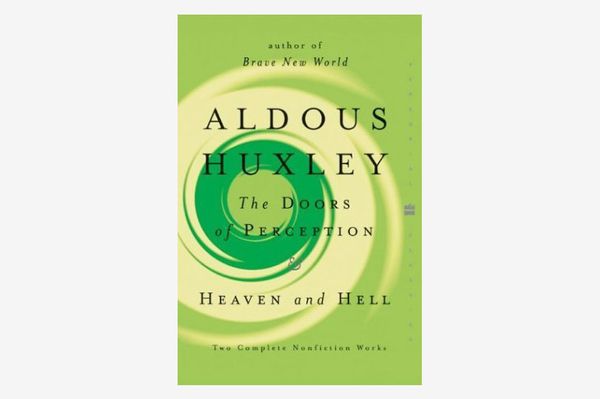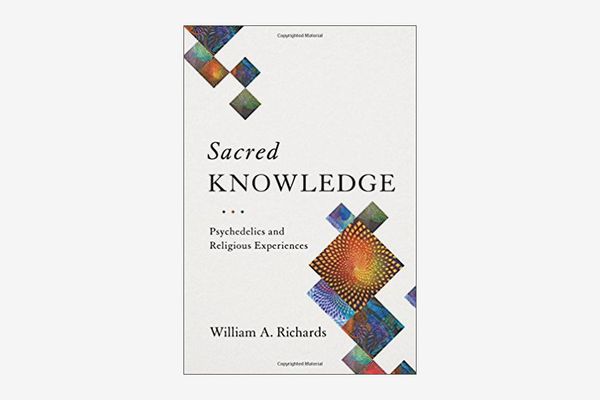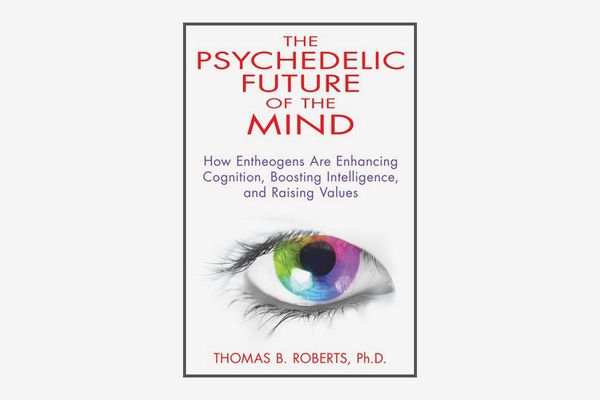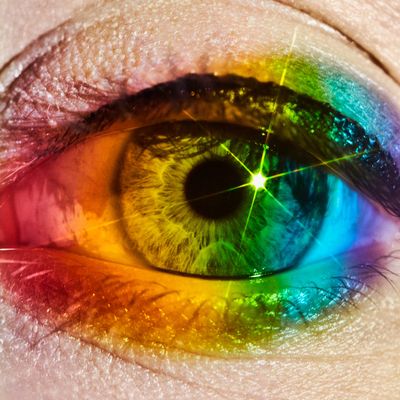
Welcome to Reading Lists, comprehensive book guides from the Strategist designed to make you an expert (or at least a fascinating dinner-party companion) in hyperspecific or newsworthy topics. This week: a selection of books (and notable articles and podcast episodes) about how psychedelics can mingle with therapy.
Microdosing — taking subperceptual amounts of drugs, to alleviate depression or think more creatively — has been on our minds. The Everything Guide to Microdosing is in the current issue of New York, and it includes interviews with people who’ve microdosed and academics and skeptics who study the practice. In case you want to know more, we quizzed the experts we spoke to for the story (and some we didn’t) on the essential books to read on psychedelic therapy.
Our panel includes James Fadiman, a leading psychologist in the field and a main character in the print story; Tom Shroder, the author of Acid Test; Tao Lin, author of Trip: Psychedelics, Alienation, and Change; Ayelet Waldman, author of A Really Good Day; Paul Austin, founder of the online microdosing education forum the Third Wave; Charles Grob, a UCLA psychiatrist who studies the effects of psilocybin in cancer patients; Rick Doblin, founder of the Multidisciplinary Association for Psychedelic Studies; and Michael Pollan, the journalist whose newest book, How to Change Your Mind: What the New Science of Psychedelics Teaches Us About Consciousness, Dying, Addiction, Depression and Transcendence, comes out on May 15.
It’s worth noting that microdosing differs dramatically from tripping, and the authors and researchers listed above are people analyzing the potential therapeutic effects of both. It’s a far-ranging field, and the books we included either got two nominations, or were recommended just once, but from a bona fide expert. Regardless, this isn’t your primer on how to get high for the sake of the party — it’s about seeing psychedelics in a new light.
Fadiman is widely considered the current authority on psychedelics and microdosing. Like its title suggests, this book is a guide: It covers best practices for safe psychedelic voyages, the value of psychedelics for healing and self-discovery, and the protocol for microdosing to improve cognitive function, emotional balance, and physical stamina. “Dr. Fadiman’s book introduced the concept of microdosing to a wide audience, dedicating an entire chapter to anecdotal reports of the emerging phenomena,” Austin says. Author (and microdoser) Waldman put it on her list as well. “This book was invaluable to me when I embarked on my microdosing journey,” she says. As did Pollan. “The Explorer’s Guide represents much of the wisdom that underground guides have collected about how best to insure a safe and productive journey.” Fadiman discusses, in depth, the importance of having a sensitive guide during trips (and breaks down how to be a good guide for somebody else), and also takes time to dispel myths and rumors about LSD — like, for instance, that the drug might permanently lodge itself in your body.
Myron J. Stolaroff wrote The Secret Chief Revealed in transcript form, based on conversations with Leo Zeff, an Oakland-based Jungian therapist who pioneered the use of LSD, ecstasy, and other psychoactive drugs in psychotherapy in the 1970s. Pollan says, “Zeff worked with psychedelics in his practice both before and after they were banned, when he moved underground. He claims to have ‘tripped’ — his locution — more than 3,000 people and trained 150 underground therapists before his death in 1988.” Doblin also recommends The Secret Chief, calling Zeff “the pioneering psychedelic therapist, whose identity was first revealed in this book. It’s as interesting from a historical perspective as it is useful for therapists and others interested in learning about the practice of psychotherapy.”
Dr. Stanislav Grof — one of the most esteemed psychedelics researchers out there — published this book in 1979. It’s a collection of his firsthand observations on the effects of LSD in his patients and research subjects. “Grof has more experience with the therapeutic use of psychedelic drugs than anyone alive,” Shroder says. Doblin recommends Grof as well: “Stan Grof’s vast insights into the subconscious, drawn from the thousands of LSD-assisted psychotherapy sessions he conducted, revolutionized the field of psychology and form the basis of most contemporary psychedelic therapy,” he says. Many of Grof’s patients have lived through unspeakable trauma — rape, abuse, and war — and he chronicles their treatment in heartbreaking detail. Unlike The Secret Chief, which looks at the world of Zeff and his practices, Grof’s book focuses more on his patients’ stories.
This book chronicles the discovery of LSD by the man who discovered it: Albert Hofmann. “LSD discoverer Albert Hofmann was not just a chemist, but a true visionary who recognized the potential that LSD has to shed light on the many realms of the human unconscious,” Doblin says of the Swiss scientist, who took acid hundreds of times during his mid-century career, regarding the drug as a dangerous but still revelatory tool. This book is Hofmann’s account of his incredible life and work, “from his discovery of LSD’s psychoactive properties in 1943, to the inception of psychiatric research using LSD to facilitate psychotherapy. I can’t recommend it enough.”
Ayelet Waldman, author of Daughter’s Keeper and Bad Mother (she’s also one of our panelists), wrote this memoir after deciding to treat her severe mood swings with a 30-day trial of small doses of LSD, procured from a man who calls himself Lewis Carroll. She found the experience transformative: Her daughter noted that she seemed happier and more adept at controlling her emotions. (“Like, when you’re angry, you’re super chill,” Waldman claims her daughter said to her, mid-experiment.) Published early in 2017, her book is a modern account of microdosing. “Waldman’s book kicked off the new wave of interest in microdosing, primarily from people interested in microdosing to alleviate certain types of suffering, like depression and bipolar disorder,” Austin says.
Austin, the 26-year-old Bushwick, Brooklyn–based founder of the Third Wave, a site devoted to educating people about microdosing, wrote this e-book to go along with the rest of his information repository. The third wave of psychedelics, says Austin, is about embracing psychedelics for their benefits, and is distinctly different from the first wave (“traditional tribal use”), and the second wave (“counterculture in the 1960s”). Austin’s guide reflects this new way of thinking about psychedelics, and is more of a modern-day CliffsNotes, compared to Fadiman’s guide. It includes tips on how to set up a weekly schedule, insights on how microdosing can help with one’s career, and the safest way to obtain psychedelics. It’s still Fadiman-recommended: “A short e-book covering the basics of microdosing for health and creativity,” he says. “Austin wisely stays away from the many clinical uses and issues. It’s unabashedly positive about microdosing’s value.”
More of a novella, Huxley — of Brave New World — published the philosophical essay The Doors of Perception in 1954. It details the author’s introspective experience — and reflections on, afterward —tripping on mescaline over the course of an afternoon. “A classic that best describes the psychedelic experience, and presciently suggested a model for understanding it’s enormous impact,” says Schroeder. Huxley, who takes the drug in the hopes of gaining self-transcendence, describes the experience minute by minute — what it feels like to enter a garden (the chairs overwhelm him, which gives him insight into madness), and to look at a vase (the vase is a “miracle of naked existence”). He ultimately concludes that psychedelic experiences are transformative, and can help people see outside of themselves.
Bill Richards is a clinical psychologist, at Johns Hopkins Bayview Medical Center, who pursued psychedelic research early in his career. His book is based on nearly three decades of research with volunteers. “Richards is the living link between the first generation of psychedelic therapy and the current renaissance,” Pollan says. “He worked at the Maryland Psychiatric Research Center, where he conducted psychedelic therapy until 1976, successfully treating alcoholics, the mentally ill, and the dying. When research resumed in the late 1990s at John Hopkins, he was made clinical director and has trained many of the guides working today. A wonderful blend of memoir and science, with a particular slant toward the spiritual implications of psychedelic therapy.” Richards has formal training in theology and religion, and spends a great deal of time in the book writing about patients who had psychedelic-induced religious experiences and spiritual awakenings.
This book explores scientific and medical research on the use of psychedelics to enrich mind, morals, spirituality, and creativity — and includes chapters by doctors who have studied psychedelic research on religious experience and alleviating the fear of death. Says Shroder, “This is the most direct book out there about the beneficial possibilities of psychedelic use in healthy adults.”
Best podcast episodes on microdosing
Reply All’s “Shine on You Crazy Goldman” episode was seminal for the new wave of microdosing, if only because it introduced such a wide audience to the practice’s very existence. In the episode, two Gimlet Media staffers (one is the Reply All co-host P.J. Vogt) take small doses of LSD at work and chronicle their experiences. Antics and insights ensue. But Reply All’s experiment was actually preceded by another important podcast episode, from Tim Ferriss. The self-improvement guru interviewed Fadiman in early 2015, discussing the immediate and long-term effects of psychedelics when used for spiritual purposes, therapeutic purposes, and problem-solving purposes.
Best magazine articles on microdosing
Besides ours, of course, some crucial magazine reading on microdosing might start with this 2015 Rolling Stone article, which published around the time as the aforementioned podcasts and helped alert people to the trend. The Economist’s 1843 magazine went long on the topic last year, and focused in particular on the (unsurprising) affection that young, professional types in Silicon Valley have for the mind-hacking habit. And lastly, there’s Michael Pollan’s New Yorker article “The Trip Treatment,” on the research looking at macrodosing (not microdosing) psychedelics to help with terminal illnesses and depression. It’s a precursor to Pollan’s forthcoming book.
And a word on Timothy Leary …
You might be wondering why Timothy Leary isn’t included in this list. The famous psychologist who coined the counterculture phrase “turn on, tune in, drop out,” and who advocated strongly for the therapeutic potential of psychedelic drugs, wrote several texts on his experiences and philosophy. But for a handful of reasons, according to our panel, his work doesn’t fit into the current canon of thought and research: “No single one of Tim Leary’s books was a major change agent at the time,” Fadiman says. “Most are unread today. Leary was always more of a disrupter and cultural critic, and did not establish a movement or followers.” Shroder was slightly more to the point: “He became kind of a nutcase, going on about aliens,” he said. “Sort of an embarrassment.”
The Strategist is designed to surface the most useful, expert recommendations for things to buy across the vast e-commerce landscape. Some of our latest conquests include the best women’s jeans, rolling luggage, pillows for side sleepers, ultra-flattering pants, and bath towels. We update links when possible, but note that deals can expire and all prices are subject to change.
Every editorial product is independently selected. If you buy something through our links, New York may earn an affiliate commission.
